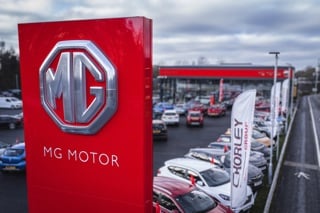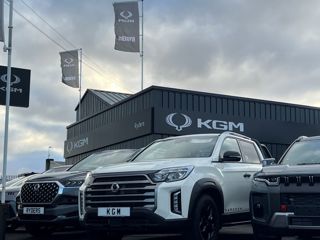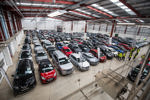Fiat: 5/14. Fiat can justly be described as the 500 car company. The Punto and Bravo are on their last legs, which means Fiat currently has three viable models – Panda, 500 city car and 500L B-segment MPV (or four if you generously count the 7-seat 500L MPW as a different model). They will be joined soon by the B-segment crossover 500X, but that is hardly a range. Given its tiny market footprint, it is odd that Fiat does not bring in its decent Freemont D-segment SUV – Britain is not exactly averse to such cars.
| Number of models per market segment | |
 |
While there is no direct correlation between the breadth of a model range in mainstream segments and financial health, it is an important factor. Being able to offer a broad range is still a consideration when selling to fleets, and a wider range spreads risk. Fiat is far healthier than its tiny range would suggest, but the consequences of a botched 500 replacement do not bear thinking about. Fiat boss Sergio Marchionne is on record as saying there is no point selling C-segment hatchbacks in Europe because no one can make money on them. It seems unlikely Ford will follow that logic and stop selling the Focus in Europe any time soon.
It is instructive to look at Nissan’s approach. After years of uncompetitive Sunnys and Almeras, it abandoned C-segment hatchbacks in favour of the Qashqai. However, Nissan believes the Qashqai has given it the critical mass to re-enter the C-segment hatchback market with a forthcoming model. Thus, despite the success of the Qashqai (and the Juke), Nissan does not believe it can ignore important sub-segments – it just needs the size and credibility to compete in them.
That is surely the point. Car companies can use niche models to make up for failure of mainstream models (e.g. Fiat with the 500 rather than the Punto) for a period of time. However, in the long term, they have to fish where the fish are. There is no getting away from the fact that mainstream manufacturers have to be in mainstream segments. That does not mean they have to cover all 14, but it suggests a significant issue if they are not covering more than half.
To put the position of the Europeans into perspective, both Kia and Hyundai cover nine of the 14 sub-segments. It is surely a concern that, even in their own backyards, some major European brands offer a narrower range than relatively new brands from Korea. As the British motorcycle industry proved in the 1960s, moving to an ever smaller number of segments to try and get away from Asian competition is not a great strategy.



















Outsider - 14/05/2014 17:48
Peugeot - no crossovers and no Grand C-Max rival? Ermm - what about the 3008 - that's a larger crossover than the 2008, and 5008 surely competes with the Grand C-Max? - it is just 9mm larger than the Grand C-Max. And Citroen - it never does saloons? What about the C5 saloon? I'm not sure that Jay Nagley knows what he is talking about!